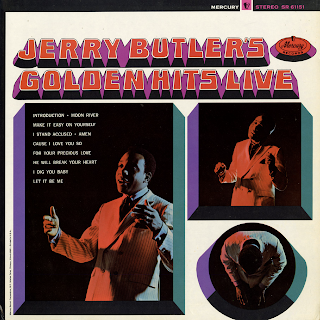Voice Of The Whale
Modern American Music Series
First Recording
George Crumb
Produced by Jay David Saks
Engineering: Edward T. Graham, Raymond Moore & Arthur Kendy
Cover Design: Katherine Polladini
Cover Illustration: Don Ivan Punchatz
Columbia M 32739
1974
Voice Of The Whale (Vox Balaenae)
For Three Masked Players
Aeolian Chamber Players
Erich Graf, Flute
Walter Ponce, Piano
Jerry Grossman, Cello and Antique Cymbals
Vocalise (...for the beginning of time)
Sea-Theme
Archeozoic (Var. I)
Proterozonic (Var. II)
Palenzoic (Var. III)
Mesozoic (Var. IV)
Cenozois (Var. V)
Recorded under the supervision of the composer
Night Of The Four Moons
(Based on fragments from Federico Garcia Lorca)
Jan DeGaetoni, Mezzo-Soprano
Aeolian Chamber Players
Lewis Kaplan, Piano
Erich Graf, Alto Flute and Piccolo
Paul Tobias, Cello
with Raymond DesRoches, Percussion
I – La Luna esta muerta, muerta... (The Moon Is Dead, Dead...)
II – Cuando sale la luna... (When The Moon Rises...)
III – Otro Adan oscuro esta sonando... (Another Obscure Adam Dreams...)
IV – Huje luna, luna, luna!... (Run Away Moon, Moon, Moon...)
Recorded under the supervision of the composer
From the back cover: Notes by the Composer
Voice Of The Whale (Vox Balaenae), composed in 1971 for the New York Camerata, is scored for flute, cello, and piano (all amplified in concert performance). The work was inspired by the singing of the humpback whale, a tape recording of which I had heard two or three years perviously. Each of the three performers is required to wear a black half-mask (or visor-mask). The mask, by effacing the sense of human projection, are intended to represent, symbolically, the powerful impersonal forces of nature (i.e. nature dehumanized). I have also suggested that the work be performed under a deep-blue stage lighting.
The form of Voice Of The Whale is a simple three-part design, consisting of a prologue, a set of variations named after the geological eras, and an epilogue.
Night Of The Four Moons, commissioned by the Philadelphia Chamber Players, was composed in 1969 during the Apollo 11 flight (July 16 - 24). The work is scored for alto (or mezzo-soprano), alto flute (doubling piccolo), mango, electric cello, and percussion. The percussion includes Tibetan prayer stones, Japanese Kabuki blocks, alto African thumb piano (mbira), and Chinese temple gong in addition to the more usual vibraphone, crotales, tambourine, bongo drums, suspended cymbal and tam-tam. The singer is also required to play finger cymbals, castanets, glockenspiel and tam-tam.
I suppose that Night Of The Moons is really an "occasional" work, since its inception was an artistic response to an external event. The text – extracts drawn from the poems of Frederico Garcia Lorca – symbolize my own rather ambivalent feelings vis-a-vis Apollo 11. The texts of the third and fourth songs seemed strikingly prophetic!
Also from the back cover: George Crumb was born in Charleston, West Virginia, in 1929. Mr. Crumb's Echoes Of Time and The River: Four Processionals For Orchestra, Premiered by the Chicago Symphony, was awarded the 1968 Pulitzer Prize in Music. In 1971, his Ancient Voices Of Children received both the international Rostrum of Composers Award (UNESCO), Paris and the Koussevitzky International Recording Award. Mr. Crumb's most recent compositions include Lux Aeterna for soprano and instruments (1971) and Makrokosmos, Volumes I and II (24 Fantasy-Pieces after the Zodiac) for amplified piano (1972-73). Mr. Crumb currently teaches composition at the University of Pennsylvania.
The Aeolian Chamber Players was founded in the Spring of 1961 by Director Lewis Kaplan from the purpose of presenting unusual works with a variety of timbre and musical thought. Performing in various combinations of their instruments, the group offers a vast and varied repertory ranging from the Baroque through music of the avant grade.
Since 1962, the Aeolian Chamber Players have toured extensively throughout the United States, Canada and Europe. Among their appearances have been concerts in New York City, Boston, Philadelphia, Baltimore, Chicago, Seattle, Vancouver, Ottawa, London, Amsterdam and Hamburg, and at the three of the major music centers in the United States – the Juilliard School, the New England Conservatory and the Oberlin Conservatory. In addition to their frequent concert tours, the Aeolians have appeared on a number of programs for N.E.T Television. Each summer since 1964 the Aeolian Chamber Players have been in residence at Bowdoin College.






















